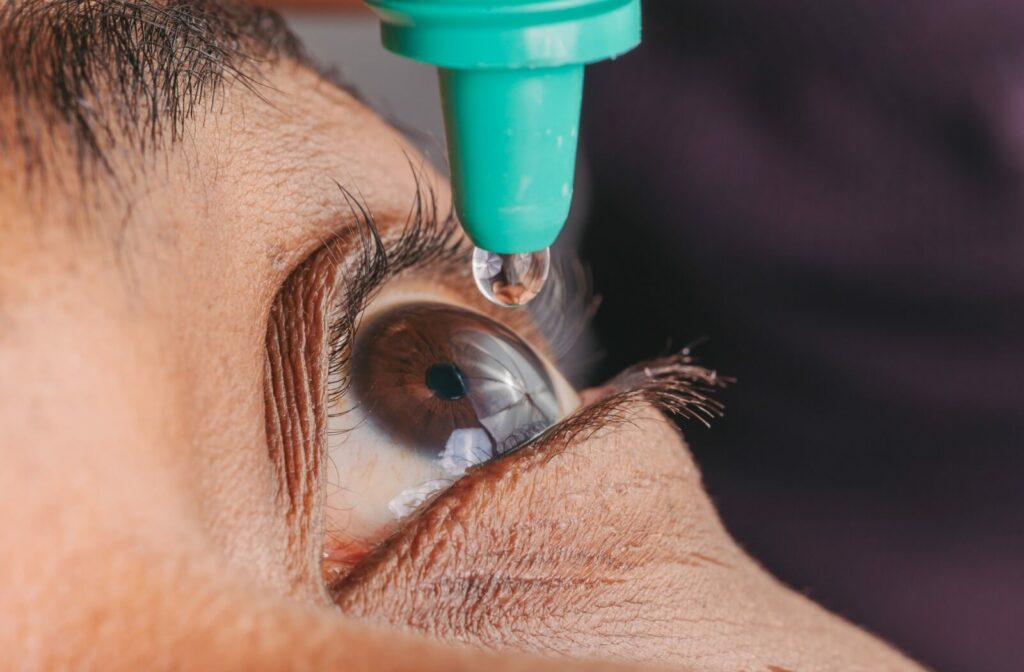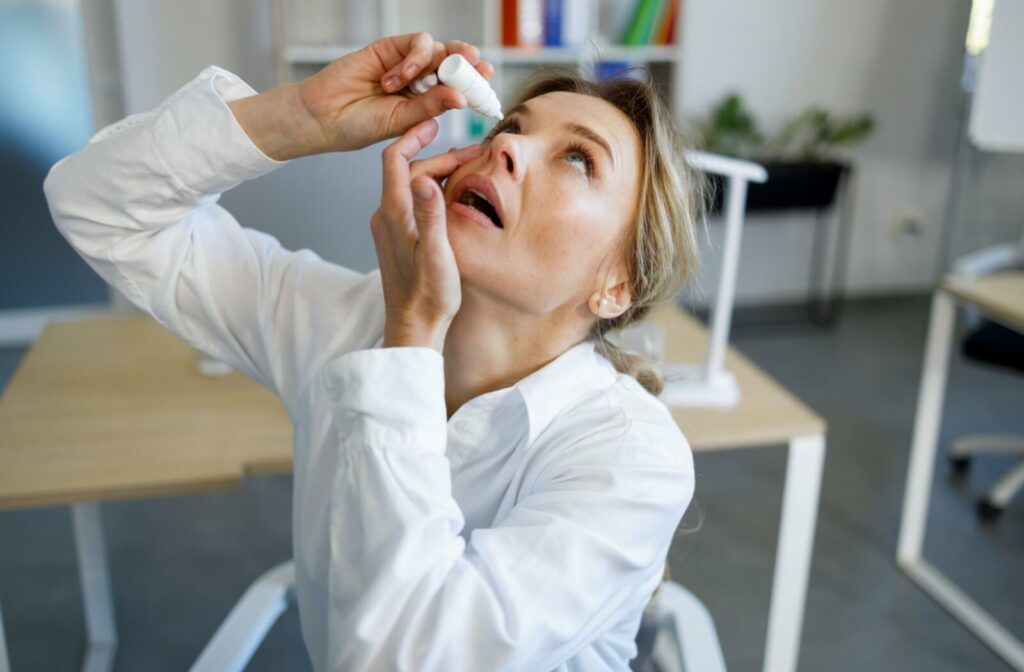If your eyes often feel dry, irritated, or tired, or you experience blurry vision that improves after blinking, you might be dealing with meibomian gland dysfunction (MGD). MGD is one of the leading causes of dry eye disease. Fortunately, there are several effective treatment options, including eye drops. Some of the best eye drops for meibomian gland dysfunction are:
- Artificial tears or lubricating eye drops
- Lipid-based eye drops
- Preservative-free eye drops
- Prescription eye drops
The right eye drops for your situation will vary based on the severity of your symptoms or whether other underlying issues are causing your dry eyes. Your eye doctor can help you determine which drops you should be using.
What Is Meibomian Gland Dysfunction?
MGD occurs when the glands in your eyelids, called meibomian glands, don’t produce enough oil or become clogged. These glands play a critical role in maintaining a healthy tear film by secreting oils that prevent tears from evaporating too quickly. When these glands aren’t functioning correctly, the result is often dry, irritated eyes.
MGD is a chronic condition, and it can affect anyone, though it’s more common in older adults. If left unmanaged, MGD can lead to more severe issues, including chronic dry eye disease.
Common Symptoms of MGD
These are some of the most common MGD symptoms:
- Burning or stinging
- Blurry vision
- Dryness or stickiness
- Irritation or foreign body sensation
- Redness and inflammation
If you consistently experience 1 or more of these symptoms, it might be time to explore ways to manage MGD.
How Eye Drops Work for MGD Management
Eye drops are often the first line of defence for MGD management. They help in several ways:
- Hydration: Eye drops add moisture to combat dryness instantly.
- Oil replenishment: Certain formulations, like lipid-based drops, supplement the oil layer of the tear film
- Symptom relief: They soothe irritation, reduce redness, and stabilize your vision by lubricating the eyes

Types of Eye Drops for MGD
Not all eye drops are created equal. Understanding the different options can help you select the most effective option for your symptoms.
Artificial Tears & Lubricating Drops
Artificial tears are designed to mimic your natural tears and are a good starting point for mild cases of MGD. But lubricating eye drops often go one step further by providing a thicker, longer-lasting layer of moisture. Look for products labelled as “long-lasting” or “advanced” lubricants if your symptoms are moderate to severe.
Lipid-Based Drops
Lipid-based eye drops are particularly effective for MGD. These drops contain oils that help replenish the lipid layer of your tear film, preventing rapid evaporation. Lipid-based drops might be ideal if your symptoms include that characteristic burning sensation and quick tear evaporation.
Preservative-Free Eye Drops
Chronic conditions like MGD often require frequent use of eye drops, which can irritate the eyes if preservatives are present. Preservative-free formulas can reduce the likelihood of additional dryness, redness, or irritation. These are especially recommended for people with sensitive eyes or those who use drops several times daily.
Prescription Eye Drops
If over-the-counter solutions aren’t adequate, we may recommend prescription eye drops. Options like Restasis or Xiidra work to manage inflammation and improve tear production in more severe cases of MGD.
Tips for Using Eye Drops Effectively with MGD
Maximize the benefits of your eye drops with these simple tips:
- Follow a schedule: Apply drops at the same times each day for consistent relief
- Keep them clean: Wash your hands before use and avoid touching the dropper tip to your eye or any surface
- Apply properly: Tilt your head back, gently pull your lower eyelid down, and apply one drop at a time
- Use warm compresses first: Warm compresses can help unclog meibomian glands and allow the eye drops to work more effectively
- Don’t mix too many products: Consult your eye doctor before using multiple types of eye drops, as some combinations may reduce their effectiveness
When to Consult an Eye Doctor
While over-the-counter eye drops can relieve many symptoms, it’s important to know when professional advice is necessary:
- Your symptoms are severe or worsening
- You experience pain, extreme light sensitivity, or sudden vision changes
- Over-the-counter drops don’t seem to be helping
An eye doctor can thoroughly evaluate and recommend additional treatments like thermal eyelid massage, prescription medications, or punctal plugs.
Get Relief for Your MGD
Your eyes work hard every day, and they deserve the best care possible. Managing MGD can feel overwhelming, but the right eye drops can make a difference. Whether you’re just starting to explore treatment options or looking to refine your current approach, plenty of solutions can be tailored to your needs.
Contact our team at Total Focus Optometry today and book an appointment. One of our experienced eye doctors can examine your eyes and determine the cause of your dry eyes. Then, we can recommend appropriate and effective treatment options.




